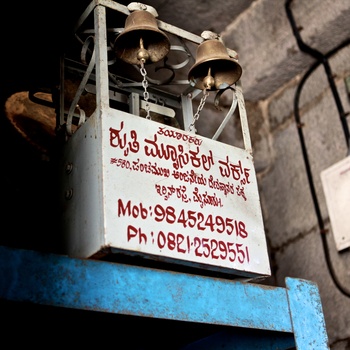 Audio is a great way to both transfer information and to deepen your connection with your audience.
Audio is a great way to both transfer information and to deepen your connection with your audience.
Through audio, they can get a much better feel for you than they can with just text. they can hear your voice, where you pause, your intonations. Maybe you make a mistake and we get to hear how you tackle that. Maybe you allow yourself to improvise and to think out loud as you're speaking.
Another advantage is that we can listen with our entire bodies, and thus tune into you at a deeper level, and have "learning by osmosis". We learn about your being by tuning into your being. It's the ultimate in teaching - you teach by being, not by doing or speaking.
It's also quick and easy to do - typically much faster and easier than writing.
And by not having a visual channel it allows us to either focus even more deeply on the spoken word, or carry it with us out into the world while we're on the subway, on the bike, or in a car.
In short, audio is a great great medium.
But what's the best way to record audio content for your products?
There are several ways to do it, and it all depends on your budget, your context, and your preferences.
We need to look at the hardware, the software, and the
Hardware
Overall, the key to audio quality is to have the microphone as close to your mouth as possible, and to have a good quality mic.
In Front of Your Computer
First, let's talk about if you're recording while sitting down in front of your computer or iPad.
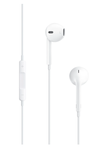 If you're on a Mac and you have an iPhone, you can use the earpods from your iPhone with your Mac. It's super easy and the quality as acceptable. I have created several products using this method. The good news is that microphone is relatively close to your mouth, and it's free, if you already own these devices. The bad news is that you do hear some noise from the microphone dangling around, and the audio quality as far from professional studio quality.
If you're on a Mac and you have an iPhone, you can use the earpods from your iPhone with your Mac. It's super easy and the quality as acceptable. I have created several products using this method. The good news is that microphone is relatively close to your mouth, and it's free, if you already own these devices. The bad news is that you do hear some noise from the microphone dangling around, and the audio quality as far from professional studio quality.
If you want better sound quality, you can go with the Rode Podcaster or the Apogee MiC. Both produce great quality sound. The Apogee is much smaller and more portable.
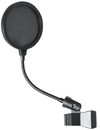 Regardless of which you choose, you'll want at least a pop filter. A pop filter is a cheap device that you mount in front of the microphone and which will remove the noises that would otherwise come from blowing into the mic when you say "p" and other sounds where air comes out of your mouth. This is because with these mics, you'll want to have your mouth right in front of them, about a centimeter away.
Regardless of which you choose, you'll want at least a pop filter. A pop filter is a cheap device that you mount in front of the microphone and which will remove the noises that would otherwise come from blowing into the mic when you say "p" and other sounds where air comes out of your mouth. This is because with these mics, you'll want to have your mouth right in front of them, about a centimeter away.
It also pays to have a good stand, and maybe a shock filter. The Rode Podcaster kit comes with those already.
Away from the computer
If you're going to record the sound of a room, or away from the computer, then a device like 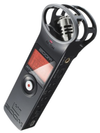 the Zoom H1 can be super handy. You can use it as-is to record a room or a conversation or an interview. Or you can plug another microphone into it. The advantage is that it's small and dedicated, you can carry it with you everywhere, you're independent of your computer, it's got an excellent microphone built-in, and it records in excellent quality. When you're done, you just take out the SD card and put it into your computer to transfer the audio files which you can the upload to Simplero. No extra software required
the Zoom H1 can be super handy. You can use it as-is to record a room or a conversation or an interview. Or you can plug another microphone into it. The advantage is that it's small and dedicated, you can carry it with you everywhere, you're independent of your computer, it's got an excellent microphone built-in, and it records in excellent quality. When you're done, you just take out the SD card and put it into your computer to transfer the audio files which you can the upload to Simplero. No extra software required
If you're recording audio of you leading a workshop, for example, and you want good audio of you, you'll probably want a wireless lavalier mic. This is where you'd be wearing a clip-on microphone or your chest somewhere, and a wireless transmitter somewhere on your back, and then a wireless receiver can be mounted on your computer or the Zoom H1.
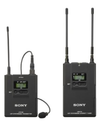 I personally have the Sony UWP system, and it's absolutely great, but not cheap. You can get cheaper systems, but all the cheaper ones I've tried to date have pretty poor range, sound quality, and build quality. There may be newer models on the market that I don't know. This Audio Technica system looks promising, though, and Audio Technica generally has a reputation for good quality products.
I personally have the Sony UWP system, and it's absolutely great, but not cheap. You can get cheaper systems, but all the cheaper ones I've tried to date have pretty poor range, sound quality, and build quality. There may be newer models on the market that I don't know. This Audio Technica system looks promising, though, and Audio Technica generally has a reputation for good quality products.
Software
To record your audio at your computer, the best way I know of on a Mac is Screenflow. This is also the best software for recording screencasts, eg. when recording yourself speaking over a PowerPoint presentation or a mind map, so you may already own it. It's $99 and well worth the price. It makes editing super easy, and can be used for audio-only recordings as well.
If you don't want to invest in Screenflow and you're using a Mac, you can use GarageBand which comes bundled with the Mac, so you already own it.
If you're on Window ... to be honest, I have no idea. You can try using the built-in Sound Recorder and see how well that works for you.
Uploading
Once you've recorded your software, you'll want to output it as on MP3 file. If you have it in another audio format, such as a WMA file, you can upload that, too, and we'll convert it to an MP3 file for you. But if MP3 is just as easy, use that.
The you just go to the Media Files area in your Simplero account and drag the file into the window, or click the "Upload media files" button and upload it, and it'll be ready to add to your products or spaces or even to your lists as a freebie.
Good luck with your audio recording. It's a great medium, a great way to transfer information while also creating a deeper bond with your audience.
Comments